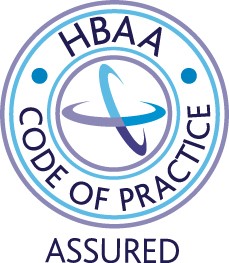All our rooms have a story
The building was designed and built within the confines of two plane trees - one towards the west wing and the other in the garden. Both trees remain to this day. This boardroom room was known as the meeting room. All new guests were invited in here and there was always a fire on and visitors were served with tea and scones from the kitchen’s cookery school. At that time girls had very little prospects. Mary Ward started a cookery school and girls also learned general housekeeping. These girls were highly sought after and had no problem in gaining employment. Mary Ward had a farm in Norwich and had the produce delivered daily by train to Euston and then by horse and cart to Mary Ward House. Mary Ward believed good wholesome food was very important for children’s well being. She also had a garden at the back of Mary Ward House. This garden extended as far back to the BMA building and was cultivated by the children.
Leaving the Boardroom you ascend two steps. You will note the low ceiling. This was to remind people of how privileged they were in being conscious of the ceiling height as poor people’s growth was stunted.
Down steps into the Billiard Room (Emerson). As you will notice most of the doors were double doors. This was because women’s dress at the time consisted of the bustle, which would not fit through narrow doors. Some doors are single and these rooms for set aside for men’s pursuits, as in the billiards room. There is a frieze, depicting sportsmen of Greek and Roman times, all around the top of the room. But apparently their endowments were considered to be a distraction for the National Institute of Social Work who had the frieze painted over.
We now go to the Common Room which was the dining room (Lethaby). The original fitted furniture, designed and made by Heals is still in place. The tables were designed so as they could be folded and stored away under the counter tops so as activities could take place in the room. Notice the large plane tree in the garden – We now go through to The Council Room (Voysey), which was used as a sitting room, where the residents met and chatted after meals and also discuss the planned activities. The settlement was managed by a warden. Note the two fireplaces. There were two fireplaces in the dining and sitting rooms to counter ‘the cold back syndrome’. In this room there was an addition of a radiator as the two fireplaces were not opposite each other.
We now go up the steps to the Classroom (Virginia Woolf). This room was known as the Cripples Room. The inclusion of steps throughout the building was considered by Mary Ward not to be a problem for people with disabilities – her thinking was that people were capable of overcoming these difficulties. The windows were designed to be low so as the children could see out.
We now go into the Library (Dickens Library). This was one of the first public libraries in the UK. Debate had raged for years as to whether the public should have access to a library. The authorities at the time had the opinion that poor people could not read and therefore could and would not avail of it. The library proved to be a huge success. The library was dedicated to Thomas Hill Green, the noted philosopher. T H Green posed the question as to how governments could control the influence of companies who would become so powerful that they would overrule governments, national and international, seeking only their own advantage and profit.
Up the stairs to Mary Ward Hall, which holds busts of people who works influenced the project. Charles Dickens was an inspiration for the free legal aid. William Herschel, the astronomer, lived next door and Ralph Waldo Emerson, the poet, was a great speaker as a liberal democrat. Mary Ward believed that taking an active part in operas, musicals and dramas was essential for everybody. Gustaf Holst, who wrote The Planets was the musical director in the hall. Five opera companies operated here at one time and some went onto national prominence.
George Bernard Sham advised and encouraged in particular the settlement‘s own writing of plays, which they felt were relevant to them. Mary Ward Hall was home to the Tavistock Players for over a hundred years. On a Saturday, up to 500 local children took part in activities in the hall. The activities included dancing, gymnasium, and football. Hikes and walks were also organised.
In more recent times you may have been viewing “Finding Nancy” which was filmed in Mary Ward Hall as well as other well-known TV productions – Friar Ted, The Kumars at No 42. Ballet Shoes, filmed in the Billiard Room and Robert De Niro’s film The Good Sheppard filmed in the Library using the Mary Ward Hall for the makeup.



